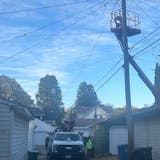Last winter, ice skaters and hockey players in Bloomington were stuck lacing up their skates in the cold — because the labor market was too hot.
Without enough staff, Bloomington couldn't open the warming houses next to its nine outdoor ice rinks. The closures came after staff shortages earlier in the year forced cuts to summer camps and reduced hours for other park programs.
"We really let down a lot of families in the community that enjoy, and rely on, these opportunities," said Bloomington Parks and Recreation Director Ann Kattreh.
But city officials say they hope big raises for warming house attendants — and all kinds of other workers in the just-passed 2023 budget — will attract enough workers to sustain services this winter.
To keep wages competitive in Minnesota's tight labor market, local leaders are directing more resources to pay employees: This month, when city councils across the state passed their budgets, they approved raises for municipal workers from police to planners to pool staff. Depending on the city, money for raises is coming from a combination of higher property tax revenues from rising property values, increased tax rates and higher rates for permits, licenses and fees.
"The market trends are definitely impacting city operations and city budgets," said Gary Carlson, intergovernmental relations director for the League of Minnesota Cities. Between rising wages and other rising costs, he said, proposed tax increases across the state this year have been higher than normal.
Statewide, the total preliminary property tax levy for 2023 appears headed for an increase of 6% over the final levy in 2022, Carlson said. Last year, the preliminary increase for property taxes statewide was 4.5%, and later dropped to a final levy increase of 3.9%, he said.
"The community's priorities are always reflected in the budget document," said Luke Fischer, the League's deputy director. "It's intended to balance everyone's needs and perspectives," he said, as well as the competing goals of keeping taxes low and services robust.


